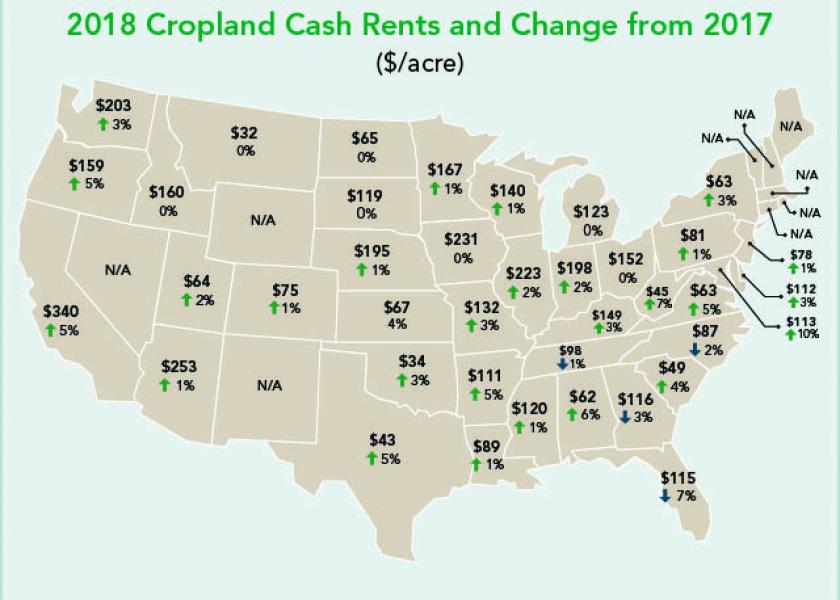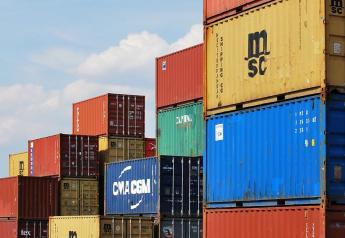Which 10 States Have the Highest Cash Rent?

For 2018, the national average for cash rents on cropland is $138 per acre, which is 1.5% higher than 2017. The national average for irrigated cropland is $215 per acre, which is $3 per acre higher than last year. Pastureland stayed flat, averaging $12.50 per acre.
So which states have the highest cash rents in 2018?
| State | Cropland Cash Rent ($/acre) |
| California | $340 |
| Arizona | $253 |
| Iowa | $231 |
| Illinois | $223 |
| Washington | $203 |
| Indiana | $198 |
| Nebraska | $195 |
| Minnesota | $167 |
| Idaho | $160 |
| Oregon | $159 |
Move the white sliders on the maps below to see how state-level cash rent prices have changed from 2017 to 2018.
Montana, Oklahoma and Texas have the lowest state-average cash rents in the country.
Maryland showed the largest year-over-year increase, 10%, for cropland cash rents. West Virginia posted a 7% increase over 2017 and Alabama cash rents increased by 6%.
Four states—Tennessee, North Carolina, Georgia and Florida—saw a drop in state-average cash rents. Florida’s decline of 7% was the largest decrease.
Cash rental rates have been on a steady increase over the last two decades. The U.S. average for cropland cash rent peaked in 2015 at $144 per acre.
Are you currently negotiating 2019 cash rental rates? If so, we have some resources for you:
The Question: To Rent or Not to Rent?
Strategies To Nail Your Cash Rent Negotiations
Three Ways to Wow Your Landlords
Nail Your 2019 Land Lease Agreement
Volatile Markets Make Setting Cash Rent Even Tougher
Cash Rented Farmland: How Do You Know It's Time To Walk Away?







